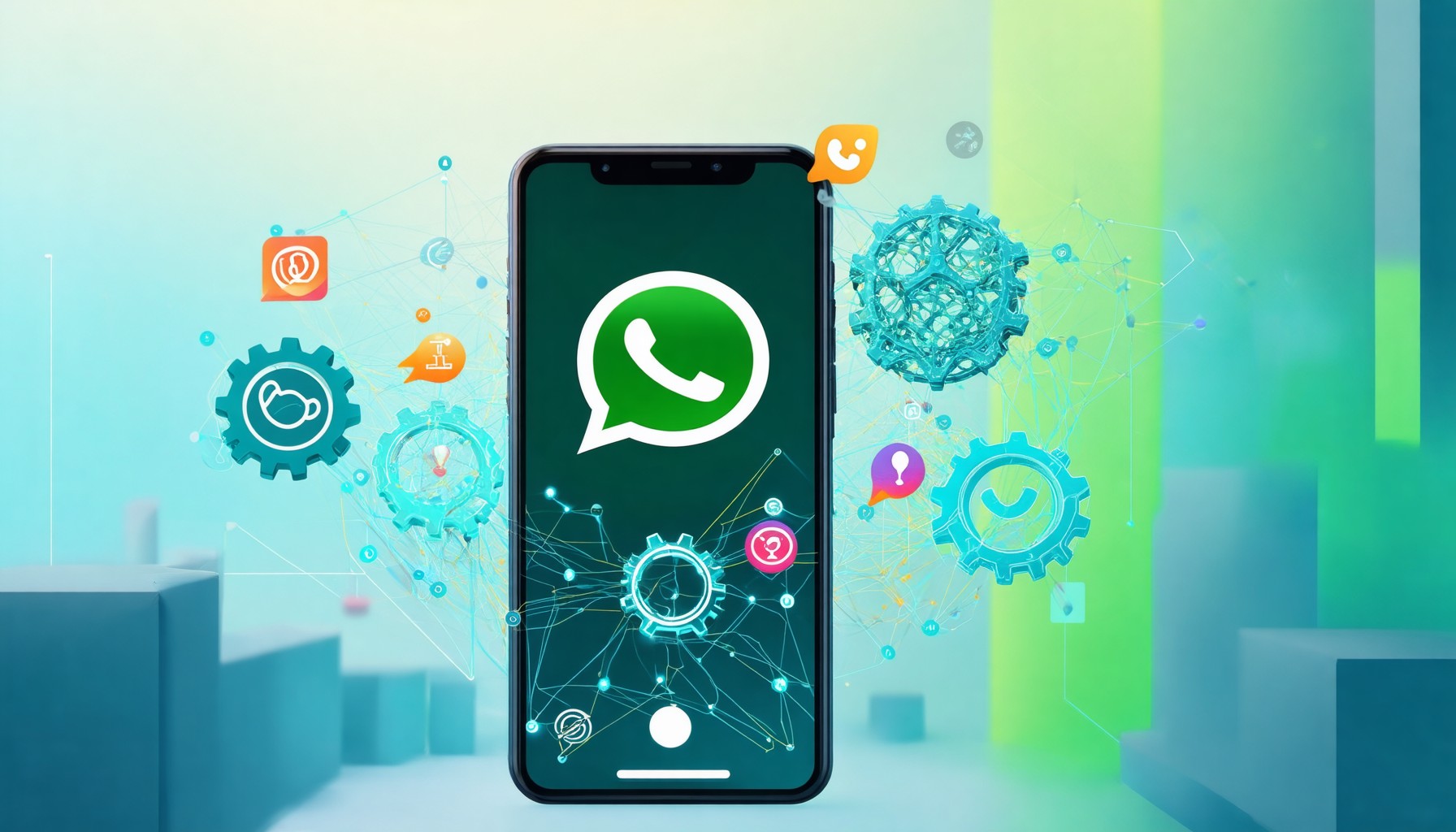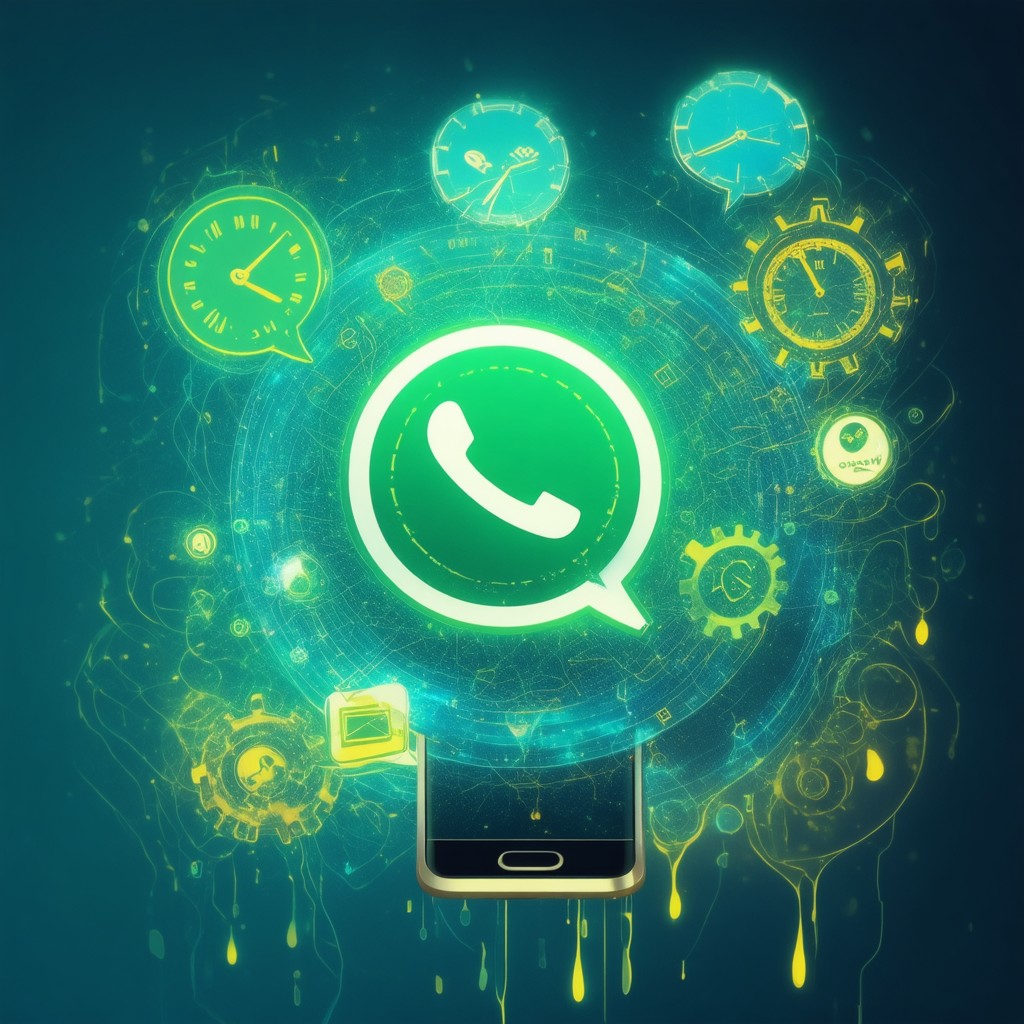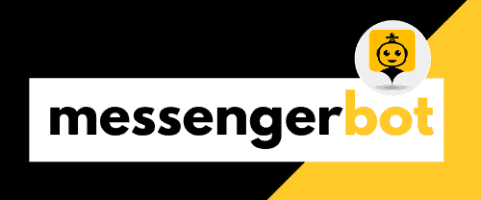Key Takeaways
- Integrating a chatbot en WhatsApp can transform customer engagement, offering automated responses and streamlined communication.
- Utilize platforms like Twilio and SendPulse for easy access to the WhatsApp Business API, enabling effective chatbot management.
- Enhance user experience with AI capabilities, such as ChatGPT, providing instant and personalized responses to inquiries.
- Evaluate both free and paid WhatsApp chatbot options to determine the best fit for your business needs and growth plans.
- Regularly monitor analytics to optimize chatbot performance, ensuring high customer satisfaction and engagement.
Welcome to your ultimate resource for mastering the chatbot en WhatsApp. In today’s digital landscape, integrating a chatbot into your WhatsApp platform can revolutionize how you engage with customers, streamline communication, and enhance user experience. This comprehensive guide will walk you through everything you need to know, from the basics of using a chatbot on WhatsApp to exploring the powerful capabilities of Chat GPT within your business. We’ll delve into whether WhatsApp chatbots are free and provide a detailed step-by-step guide for setting up AI chat on WhatsApp. Additionally, we’ll cover essential steps to start your WhatsApp chatbot journey and evaluate the differences between free and premium options. By the end of this article, you’ll be equipped with the knowledge to successfully integrate a chatbot into your WhatsApp strategy, ensuring you stay ahead in the ever-evolving world of digital communication.
How do I use Chatbot on WhatsApp?
Integrating a chatbot into WhatsApp can revolutionize how businesses interact with their customers. By leveraging the WhatsApp Business API, companies can automate responses, streamline communication, and enhance customer engagement. Here’s a closer look at how to effectively use a chatbot on WhatsApp.
Understanding the Basics of WhatsApp Chatbot Integration
To create a WhatsApp chatbot for your business in just a few steps, follow this straightforward process:
- Choose the Right WhatsApp Business API Platform: Select a reputable platform that supports the WhatsApp Business API, such as Twilio, MessageBird, or 360dialog. These platforms provide the necessary tools and infrastructure to build and manage your chatbot effectively.
- Design Conversational Flows: Create automated dialogs that cover common customer inquiries and topics. Use flowcharts to visualize the conversation paths, ensuring that users receive relevant responses. Incorporate Natural Language Processing (NLP) to enhance understanding and engagement.
- Implement Personalization and Data Integration: Utilize customer data to personalize interactions. Integrate your chatbot with CRM systems to access user information, enabling tailored responses that improve customer satisfaction. Personalization can significantly increase user engagement and retention.
- Test and Optimize: Conduct thorough testing of your chatbot to identify any issues in conversation flows or user experience. Gather feedback from users and analyze interaction data to optimize performance. Regularly update your chatbot based on user behavior and preferences to ensure it remains effective.
- Monitor Analytics: Use analytics tools provided by your chosen platform to track user interactions, response times, and overall engagement. This data will help you make informed decisions about further enhancements and adjustments to your chatbot strategy.
Key Features of the WhatsApp Chatbot App
The WhatsApp chatbot app offers several key features that enhance user experience and operational efficiency:
- Automated Responses: Quickly address customer inquiries with AI-driven automated responses, ensuring timely communication.
- Multilingual Support: Engage a diverse audience by providing responses in multiple languages, catering to global customers.
- Analytics and Reporting: Gain insights into user interactions and engagement metrics, allowing for continuous improvement of your chatbot.
- Integration Capabilities: Seamlessly connect with other tools and platforms, enhancing the overall functionality of your chatbot.
For more insights on maximizing the benefits of your WhatsApp chatbot, explore our comprehensive guide on WhatsApp Chatbot Examples.
Is Chat GPT available on WhatsApp?
Yes, ChatGPT is available on WhatsApp, allowing users to interact with the AI seamlessly through their mobile devices. Here’s how you can access it:
- Link Your ChatGPT Account: You can link your ChatGPT account (whether Free, Plus, or Pro) to WhatsApp. This integration enhances your experience by enabling easy access to ChatGPT’s capabilities directly from your messaging app.
- Account Linking Process: When you reach the rate limits in your conversation, you will receive a prompt to link your account. Alternatively, you can link your ChatGPT account by visiting the contact profile of 1-800-ChatGPT and clicking the provided URL (https://chatgpt.com/link/whatsapp).
- Using ChatGPT on WhatsApp: Once linked, you can send messages to ChatGPT, and it will respond in real-time, making it a convenient option for users who prefer messaging over traditional web interfaces.
For more detailed information on using ChatGPT across different platforms, including WhatsApp, you can refer to OpenAI’s official documentation and support pages.
Exploring AI Capabilities in WhatsApp Chatbots
WhatsApp chatbots powered by AI, like ChatGPT, are revolutionizing customer interactions. These chatbots can handle a variety of tasks, from answering frequently asked questions to providing personalized recommendations. The integration of AI allows for a more engaging and efficient communication experience, which is essential for businesses looking to enhance customer satisfaction.
Moreover, AI chatbots can analyze user interactions to improve their responses over time, making them more effective in addressing customer needs. This capability not only streamlines communication but also helps businesses gather valuable insights into customer preferences and behaviors.
To explore more about how AI chatbots can transform your customer engagement, check out our comprehensive guide on Online AI Chatbot Engagement.
Benefits of Using Chat GPT for Your WhatsApp Business AI Chatbot
Integrating ChatGPT into your WhatsApp business chatbot offers numerous benefits. First and foremost, it enhances user experience by providing instant, accurate responses to inquiries. This immediacy can significantly reduce wait times, leading to higher customer satisfaction.
Additionally, ChatGPT’s ability to understand and generate human-like text allows for more natural conversations. This can help in building rapport with customers, making them feel valued and understood. Furthermore, the scalability of AI chatbots means that businesses can handle a larger volume of inquiries without the need for additional human resources.
For businesses looking to implement AI solutions, exploring options like Brain Pod AI can provide advanced capabilities, including multilingual support and detailed analytics to track performance. This can be particularly beneficial for businesses aiming to reach a global audience.
Is WhatsApp Chatbot Free?
When considering the implementation of a WhatsApp chatbot, many users wonder about the associated costs. The good news is that creating a WhatsApp chatbot can indeed be free, especially with platforms that offer no-code solutions. For example, SendPulse provides a WhatsApp chatbot builder that allows users to create and manage chatbots without any upfront costs. Here are some key points to consider:
- Free Access: SendPulse offers the first 1,000 monthly sessions for free, along with access to the WhatsApp Business API. This means you can engage with customers without incurring setup fees, subscription costs, or hidden charges.
- No-Code Development: The platform enables users to build chatbots without any programming knowledge. This is particularly beneficial for small businesses or individuals looking to enhance customer interaction without technical barriers.
- Features: WhatsApp chatbots can automate responses, provide customer support, and facilitate transactions, making them a valuable tool for businesses. The integration with WhatsApp Business API allows for seamless communication with customers.
- Scalability: While the initial offering is free, businesses can scale their usage as needed. Once the free tier is exceeded, there are affordable pricing plans available.
For more detailed information on chatbot development and features, you can refer to the official SendPulse website and their documentation on WhatsApp chatbots.
Cost Analysis of WhatsApp Chatbot Solutions
Understanding the cost structure of WhatsApp chatbot solutions is crucial for businesses aiming to optimize their customer engagement strategies. While many platforms offer free tiers, it’s essential to analyze the potential costs as your needs grow. Here’s a breakdown of what to expect:
- Initial Costs: Many platforms, like SendPulse, allow you to start for free. However, as your business scales, you may need to consider paid plans that offer additional features and higher usage limits.
- Monthly Fees: Depending on the platform, monthly fees can vary significantly. Some services charge based on the number of messages sent or the number of active users, while others may have flat-rate pricing.
- Hidden Costs: Always check for hidden fees related to API usage, additional features, or customer support. Transparency in pricing is vital to avoid unexpected expenses.
- Long-Term Value: Investing in a robust WhatsApp chatbot solution can lead to increased customer satisfaction and retention, ultimately providing a strong return on investment.
For a comprehensive understanding of WhatsApp chatbot pricing, you can explore the Messenger Bot pricing page for various options available.
Free vs. Paid WhatsApp Chatbot Options
Choosing between free and paid WhatsApp chatbot options depends on your business needs and growth plans. Here’s a comparison to help you decide:
- Free Options: Platforms like SendPulse offer free plans that are ideal for startups or small businesses. These options typically include basic features, allowing you to automate responses and engage with customers without upfront costs.
- Paid Options: Paid plans often come with advanced features such as analytics, multi-channel support, and enhanced customization. These are beneficial for larger businesses or those looking to scale their operations.
- Feature Set: Free options may limit the number of messages or sessions, while paid plans provide more extensive capabilities, including integrations with other tools and platforms.
- Support and Resources: Paid plans usually offer better customer support and access to additional resources, which can be crucial for businesses needing assistance in optimizing their chatbot.
Ultimately, the choice between free and paid WhatsApp chatbot options should align with your business goals and customer engagement strategies. For more insights on maximizing your WhatsApp chatbot benefits, check out the WhatsApp Chatbot Guide.
How to get AI chat on WhatsApp?
Getting AI chat on WhatsApp is a straightforward process that can significantly enhance your communication experience. By integrating AI chatbots, you can automate responses, engage users, and streamline interactions. Here’s how to set it up:
- Download WhatsApp: Ensure you have the latest version of WhatsApp installed on your device. You can download it from the App Store (iOS) or Google Play Store (Android).
- Find an AI Chatbot: Search for AI chatbots that are compatible with WhatsApp. Popular options include ChatGPT-based bots or other AI services that offer WhatsApp integration.
- Add the AI Chatbot:
- Open WhatsApp and go to the chat screen.
- Tap on the chat icon and select “New chat.”
- Enter the phone number of the AI chatbot you wish to chat with. This number is usually provided by the service offering the AI chat.
- Start the Conversation:
- Once the chatbot is added, tap on its name to open the chat.
- Type your message or question in the message field and send it.
- Follow Instructions: If prompted, read and accept any terms of service or privacy policies. Some AI chatbots may require you to set up an account or provide additional information.
- Engage with the AI: Type your queries or prompts in the chat, and the AI will respond accordingly. You can ask for information, assistance, or even casual conversation.
For more advanced AI interactions, consider exploring platforms that integrate AI chat capabilities with WhatsApp, such as Twilio or other chatbot development services. These platforms often provide additional features like automated responses and personalized interactions.
Best Practices for Implementing WhatsApp AI Chatbot
Implementing a WhatsApp AI chatbot effectively requires careful planning and execution. Here are some best practices to ensure your chatbot delivers optimal performance:
- Define Clear Objectives: Before launching your AI chatbot, establish what you want to achieve. Whether it’s customer support, lead generation, or engagement, having clear goals will guide your chatbot’s design and functionality.
- Utilize Natural Language Processing (NLP): Leverage NLP capabilities to enhance user interactions. This allows the chatbot to understand and respond to user queries more effectively, making conversations feel more natural.
- Test and Optimize: Regularly test your chatbot’s performance and gather user feedback. Use this data to make necessary adjustments and improve the user experience continually.
- Ensure Compliance: Make sure your chatbot complies with WhatsApp’s policies and data protection regulations. This builds trust with users and protects their privacy.
- Integrate with Other Tools: Consider integrating your WhatsApp chatbot with CRM systems or other marketing tools to streamline operations and enhance customer interactions.
By following these best practices, you can create a WhatsApp AI chatbot that not only meets user expectations but also drives engagement and satisfaction. For more insights on maximizing your WhatsApp chatbot’s benefits, check out our WhatsApp Chatbot Guide.
How do I start a chatbot?
Starting your WhatsApp chatbot journey involves several essential steps that will set the foundation for a successful implementation. By following these guidelines, you can create a chatbot that effectively meets your business needs and enhances user engagement.
Essential Steps to Start Your WhatsApp Chatbot Journey
- Define Goals and Objectives: Clearly outline what you want your chatbot to achieve. This could include customer support, lead generation, or providing information. Understanding the purpose will guide the design and functionality.
- Choose a Suitable Platform and Technology: Select a platform that aligns with your goals. Popular options include Dialogflow, Microsoft Bot Framework, and Chatfuel. Consider whether you want to deploy on messaging apps like Facebook Messenger, websites, or mobile apps.
- Design Conversational Flows: Map out the conversation paths your chatbot will take. Use flowcharts to visualize interactions, ensuring a natural and engaging user experience. Incorporate user intents and possible responses to create a seamless dialogue.
- Utilize Natural Language Processing (NLP): Implement NLP to enable your chatbot to understand and process human language effectively. This technology allows your bot to interpret user queries and respond appropriately, enhancing user satisfaction.
- Incorporate Machine Learning: Train your chatbot using datasets to improve its responses over time. Machine learning algorithms can help your bot learn from interactions, making it smarter and more efficient.
- Test, Evaluate, and Iterate: Conduct thorough testing to identify any issues in the chatbot’s performance. Gather user feedback and analyze interaction data to refine and improve the chatbot continuously.
- Launch and Monitor: Once testing is complete, launch your chatbot. Monitor its performance using analytics tools to track user engagement and satisfaction, making adjustments as necessary.
Choosing the Right WhatsApp Chatbot API for Your Needs
When selecting a WhatsApp chatbot API, consider the following factors to ensure it meets your specific requirements:
- Integration Capabilities: Ensure the API can easily integrate with your existing systems and platforms, such as CRM or e-commerce solutions.
- Scalability: Choose an API that can grow with your business, accommodating increased user interactions without compromising performance.
- Support and Documentation: Look for APIs that offer robust support and comprehensive documentation to assist you during the setup and maintenance phases.
- Cost-Effectiveness: Evaluate the pricing structure of the API, considering both free and paid options. This will help you determine the best fit for your budget while still providing the necessary features.
For more insights on WhatsApp chatbot solutions, check out our WhatsApp Chatbot Guide and explore how to maximize the benefits of your WhatsApp bot.
Is chat chatbot free?
When considering the integration of a chatbot en WhatsApp, many users wonder about the cost implications. The good news is that numerous AI chatbots are available for free, allowing users to engage in conversations and ask questions without any cost. These free AI chat services typically offer a range of functionalities, including:
- User-Friendly Interface: Most free chatbots are designed to be intuitive, enabling users to easily type their questions and receive immediate responses.
- Versatile Applications: Free chatbots can assist with various inquiries, from general knowledge and customer service to personal assistance and entertainment.
- Accessibility: Many platforms host free chatbots online, making them accessible from any device with internet connectivity.
- Examples of Free Chatbots: Some popular free AI chatbots include ChatGPT, Replika, and various customer service bots integrated into websites.
While these free services are widely available, it’s important to note that some advanced features or premium versions may require payment. Always check the specific terms and conditions of the chatbot service you choose to ensure it meets your needs.
Evaluating Free Chatbot Options for WhatsApp
When evaluating free chatbot options for WhatsApp, it’s essential to consider the features and limitations of each service. Free chatbots often provide basic functionalities that can be beneficial for small businesses or personal use. However, they may lack the advanced capabilities found in premium versions. Here are some factors to consider:
- Functionality: Assess whether the free version meets your basic needs, such as automated responses and user engagement.
- Integration: Ensure that the free chatbot can seamlessly integrate with WhatsApp and other platforms you use.
- Support and Updates: Check if the provider offers support and regular updates, which are crucial for maintaining chatbot performance.
- Scalability: Consider whether the chatbot can grow with your business, allowing for upgrades to premium features as needed.
For a comprehensive guide on maximizing WhatsApp bot benefits, you can explore this resource.
Comparing Free and Premium WhatsApp Chatbot Features
Understanding the differences between free and premium WhatsApp chatbot options is crucial for making an informed decision. While free chatbots can be a great starting point, premium options often provide enhanced features that can significantly improve user experience and engagement. Here’s a comparison:
- Advanced AI Capabilities: Premium chatbots typically utilize more sophisticated AI, enabling them to handle complex queries and provide personalized responses.
- Customization: Paid versions often allow for greater customization, enabling businesses to tailor the chatbot’s appearance and responses to align with their brand.
- Analytics and Reporting: Premium options usually come with detailed analytics, helping businesses track user interactions and optimize their strategies accordingly.
- Customer Support: Paid services often include dedicated customer support, ensuring that any issues can be resolved quickly.
For those looking to explore free chatbot options further, consider checking out this guide for insights on engaging with AI without registration.
Conclusion: The Future of Chatbot en WhatsApp
As we look towards the future of chatbot en WhatsApp, it’s clear that the technology is evolving rapidly. Businesses are increasingly leveraging chatbots to enhance customer engagement, streamline operations, and provide 24/7 support. The integration of AI capabilities, such as those offered by platforms like Brain Pod AI, is transforming how companies interact with their customers on WhatsApp. This evolution not only improves user experience but also drives efficiency in communication.
Trends in WhatsApp Chatbot Technology
Several key trends are shaping the future of WhatsApp chatbots:
- Increased AI Integration: The use of AI in chatbots is becoming more sophisticated, allowing for personalized interactions and improved customer service. Businesses are utilizing AI-driven solutions to analyze user data and tailor responses accordingly.
- Multilingual Support: With a global audience, the demand for multilingual chatbots is on the rise. Solutions like Brain Pod AI’s Multilingual AI Chat Assistant enable businesses to communicate effectively with customers in their preferred language.
- Enhanced Security Features: As privacy concerns grow, WhatsApp chatbots are incorporating advanced security measures to protect user data and ensure safe communication.
- Seamless Integration with E-Commerce: The integration of chatbots with e-commerce platforms is streamlining the shopping experience, allowing customers to make purchases directly through WhatsApp.
Final Thoughts on WhatsApp Chatbot Free Integration
In conclusion, the future of WhatsApp chatbot free integration looks promising. Businesses can take advantage of various free and paid options to implement chatbots that enhance customer interaction without significant investment. By exploring solutions like Messenger Bot’s free trial, companies can experience the benefits of chatbot technology firsthand. As the landscape continues to evolve, staying updated on trends and best practices will be crucial for businesses aiming to leverage WhatsApp chatbots effectively.







